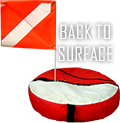The Glass Piles by Bob Libbey
THE GLASS PILES
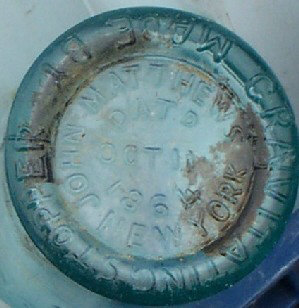 Imagine swimming up to a mound of bottles piled up on the bottom of a lake. The mound is so high and wide that you can see it as you approach. Upon inspection, the bottles are crude and very old. They feature thin tube-like blobs with torpedo-shaped sloping shoulders. The color is a brilliant deep aqua blue. The bottom of every bottle is covered with embossing that includes a patent date of 1864 right on them. Now imagine that every single bottle is broken. You've just spent a moment thinking about the (now famed) Matthew's glass piles.
Imagine swimming up to a mound of bottles piled up on the bottom of a lake. The mound is so high and wide that you can see it as you approach. Upon inspection, the bottles are crude and very old. They feature thin tube-like blobs with torpedo-shaped sloping shoulders. The color is a brilliant deep aqua blue. The bottom of every bottle is covered with embossing that includes a patent date of 1864 right on them. Now imagine that every single bottle is broken. You've just spent a moment thinking about the (now famed) Matthew's glass piles.
Who would smash hundreds upon hundreds of antique bottles? Well, technically, the bottles may have been smashed before they became antiques, but the question remains; who would do such a thing? And why? We've spent some time pondering these questions. We've speculated that perhaps competitors demolished each other's bottles in an attempt to reduce the other's market share. There is no evidence to support this theory and no competitor's glass pile has ever been found. Perhaps the bottles were broken to retrieve the internal stoppers. As I mentioned, many of the bottles in these piles were John Matthew's patented bottles. They had a glass stopper that sealed the bottle from the inside. The bottles may have been broken to recover the undamaged glass stoppers inside for re-use. There is some support for this theory. Many bottles found together were broken in the shoulder in about the same area. It's not hard to imagine someone smashing bottle after bottle with a hammer and then later, sinking the shards. There are few stoppers among the glass piles. If you pick through a pile carefully, you might find 50 to 100 bottle pieces without even a single stopper. So maybe they were keeping the stoppers. This story, however, refutes that theory. What the piles probably represent then, is the working trash piles of one bottler over the years. As returnable bottles, these Matthew's bottles were used and returned. They were cleaned and re-filled. Ultimately, some chipped, cracked, and became broken. At this time in our history, there was no garbage pick-up. There was probably no easy way to dispose of them. Additionally, there were no glass makers molding glass bottles locally. The glass makers may have paid to recycle and re-melt the broken shards. There was no environmentalist organization yet either. No one would picket with signs that said, "Keep our lakes full of bass. Don't dispose of broken glass!" The piles are in the lake because there was no place more convenient to dispose them. That explains why almost every single bottle is damaged. It does not explain where the stoppers to all those Matthews bottles went.
THE GEAR
Scuba diving requires a lot of specialized gear. Some of our gear we have streamlined and learned to do without. Straight out of class, we all had snorkels dangling from our mask straps bonking us on the heads, pulling at our hair and ears. It became clear early on that we would not need snorkels in areas with two feet of visibility or less. Some gear, however, is indispensable. You will either suffer without it, or have to stay out of the water. One day, mrbottles, (or Steve as I may refer to him), forgot his mask and we did not pack a spare. He went anyway. Diving without a mask creates an odd sensation of water on your face and in your nose while you retain the ability to breathe through your mouth (by regulator). You will not be able to see very well because your eyes need a pocket of air in front of them to focus. In fact, you might want to consider diving with your eyes closed tightly. This will help to avoid getting muck and sediment in your eyes. Steve came out of that tank pretty bloodshot.
When going on a dive trip, there is a lot of gear to remember. There's a mask, fins, regulator and gauges, a float (pumped with air), a flag, tanks, a wet or dry suit, gloves, boots, socks, a hood, a buoyancy control device, weights and a compass. You also need extra items in case of gear failure and spare parts. It's not surprising then, that we forget things once in awhile. In fact, I'll often forget a swimsuit or towels because I am trying to focus on essential items.
On the day that we planned to dive the Matthews glass piles, I distinctly remembered running through a checklist in my head of everything I needed. One look at the keys in my hand, and it occurred to me that I have way too many keys. I have a disconnect so that I can remove most of my keys except the house and car keys. These I keep with me while I am out diving. Why would I need all those other keys underwater? I threw my extra keys down on the desk and left to meet at the boat. Once I got there, I immediately realized that I had no boat keys. Fortunately, I was able to wrangle up some keys from Steve at work. After the delay, we were ready to hit the road.
THE CAST
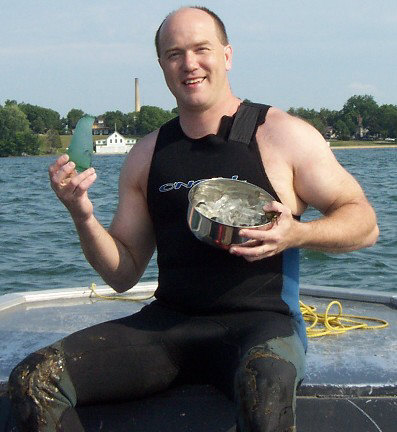 On this day, I was meeting my good buddy Jim. We share a passion for diving and hunting for old bottles. Our first meeting occurred randomly at a boat launch at some obscenely early hour of the morning. He was going diving in the same lake, on the same day, and at the same time as we were. Looking back, it seems nothing short of fateful that our paths crossed. We quickly became friends even though Jim is a resident of the state of Illinois. My wife says that he's a FIB. That is, he's her Favorite Illinois Bottle (collector type). After our first meeting, Jim told us we were idiots if we didn't get better educated on the history of the bottles we were finding. While he was correct, it was still a little hard to swallow coming from a southerner. But do not think badly of Jim. While it is true that he is an Illinois resident, he is a remarkably nice guy. On several occasions, he's given me (or traded to me) a bottle just because I liked it or collected it. Nowadays, we try to make it a point to get together a few times a year to go diving, compare finds, or see a bottle show.
On this day, I was meeting my good buddy Jim. We share a passion for diving and hunting for old bottles. Our first meeting occurred randomly at a boat launch at some obscenely early hour of the morning. He was going diving in the same lake, on the same day, and at the same time as we were. Looking back, it seems nothing short of fateful that our paths crossed. We quickly became friends even though Jim is a resident of the state of Illinois. My wife says that he's a FIB. That is, he's her Favorite Illinois Bottle (collector type). After our first meeting, Jim told us we were idiots if we didn't get better educated on the history of the bottles we were finding. While he was correct, it was still a little hard to swallow coming from a southerner. But do not think badly of Jim. While it is true that he is an Illinois resident, he is a remarkably nice guy. On several occasions, he's given me (or traded to me) a bottle just because I liked it or collected it. Nowadays, we try to make it a point to get together a few times a year to go diving, compare finds, or see a bottle show.
On that first meeting, we exchanged addresses. Jim wrote me a letter, typed in very small font, listing some of the things he collects. It was a long list with dog tags, credit cards, license plates, and coins among other things. The word "bottles" was hand-written at the bottom like an afterthought. Knowing what I know now, he must have an enormous license plate collection if bottles are an afterthought.
THE PLAN
The plan on this dive trip was to (hopefully) find a whole bottle among the many broken bottles in the Matthew's piles. Maybe some of the antique stoppers from the bottles would be great too. I also had another scheme in mind. I was going to bring back a bunch of broken bottles to use as fish-tank gravel. My sister, brother-in-law, and two nieces have a freshwater fish-tank. I thought that it would be the coolest thing to have the gravel be a bunch of really old bottle fragments. Never mind that the pieces are curved, sharp and impossible to keep clean from algae, it would be neat. So, my lovely wife gave me a large mesh laundry bag that I could fill with glass pieces. It was light, easy to see, easy to open and close, and it could hold quite a bit without getting in the way. Excellent!
THE WEATHER
Weather can play a factor on a dive. A little rain isn't too bad. It keeps boat traffic off the lake and frankly, we are going to get wet anyway. However, huge storms can be dangerous for any boater. On this day, there were high winds and dark clouds. We were in luck, though. The wind was blowing strongly but it was gusting parallel to the shoreline and the storm was off the lake. If our luck held up, the storm wouldn't hit us directly. The wind is not usually a serious problem once you are underwater.
A PREVIOUS REVELATION
The first time I ever found a glass pile, I was in a funny state. I was impressed at the age, the crudity and the beauty of the bottles, but disappointed that they were all broken. I picked through that first pile and loaded up on the biggest pieces I could find. I stuffed them up the seams of my wet suit (at the thighs) and put as many in each hand as I could hold. Reluctantly, I left the pile to unload at the surface. I have a float (with a dive flag) that follows me wherever I go on a line. It serves several functions. It alerts boaters and other surface traffic that there is a diver below. It also serves as a repository for our finds until we can stash them in the boat. Lastly, the line can be used to pull yourself to the surface if you find something heavy like a large anchor. My plan was to unload the bottles at the first pile that I ever found and then sink right back down upon it to search for some more. After I unloaded, I sank down to find no glass pile. I must have drifted off of it. Well, maybe I wasn't careful enough. I searched around and found another pile. I did everything about the same and discovered upon my descent to the bottom that I'd lost this pile as well. Time to get serious. Time for some smart monkey logic.
We humans are, in essence, very smart monkeys. We have these biologically over sized brains which allow us to solve problems in creative ways. When we wanted to explore the underwater environment, for example, we came up with scuba. Smart monkeys! So, there must be a smart monkey solution to keep from losing a glass pile while surfacing. I decided to take the end of my float line off of my arm and to stick it into the muck inside the glass pile at the bottom. That way, I could go to the surface and then follow the line right back down to the pile. One problem is that you could swim too far away from your flag if you lost the pile. Then surface traffic might not be alerted to your presence in the water and might not be able to spot you. The solution to that problem is to surface and swim back to the float if you wander off of the pile. That way you never get very far away from your flag. If you want, you can swim right back down to the pile that you just lost.
THE DIVE
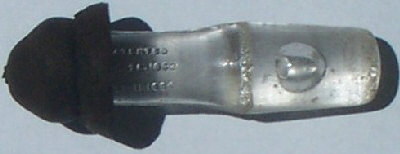 As Jim and I prepared to go under, Jim had a fin strap break. We couldn't find a spare, and he was forced to improvise something. My wet suit was getting old and it had a faulty zipper. It wouldn't zip up over my left side. That would make the water feel colder but I was comfortable with the temperature without zipping. I would also lose the storage at my left thigh seam. As earlier noted, I can tuck things into the gap between the upper and lower parts of my wet suit. Today, however, I had a laundry bag to hold the goodies, so, I should be okay...
As Jim and I prepared to go under, Jim had a fin strap break. We couldn't find a spare, and he was forced to improvise something. My wet suit was getting old and it had a faulty zipper. It wouldn't zip up over my left side. That would make the water feel colder but I was comfortable with the temperature without zipping. I would also lose the storage at my left thigh seam. As earlier noted, I can tuck things into the gap between the upper and lower parts of my wet suit. Today, however, I had a laundry bag to hold the goodies, so, I should be okay...
Before too long, in about twenty-five to thirty feet of water, I had found a Matthew's glass pile. I stuck the end of my float line into the mucky bottom. I opened up the laundry bag and started filling it up with broken bottles. I was excited to find a glass stopper with a rubber piece still on it. After some time, I managed to fill up the entire bag with antique glass shards. I was going to head up to the surface to unload it. This proved to be a little troublesome. The filled bag was very heavy and unruly. I'm guessing that it was easily thirty to forty pounds. I pulled myself up the float line while kicking with my fins for boost. Several times, I had to adjust my grip on the bag or let go of the float line to keep the bag from falling. When I reached the surface, the wind was really blowing and the water was choppy. The waves were lifting me up and down while slamming me around. I was trying to hold myself up with one hand on the float while hanging onto the bag with the other. The glass was weighing me down and I was kicking as best I could with my fins to stay afloat. I knew that I would need to improve my buoyancy to stabilize myself at the surface. I used the hand holding the bag to manually inflate my buoyancy control device ("BCD") which acts like a life-jacket at the surface. I curled my legs up to help hold the bag of glass in my lap while I inflated the BCD one breath at a time like I was giving it CPR. Finally, I had filled it with enough air that I was floating. Just then, the bag slipped and sank. It was gone. Well, I didn't have to be at the surface anymore. I thought that I should try to sink down right where I was instead of following my float line. If I sank straight enough, I could land right on the bag and come right back up. No big deal. When I reached the bottom, the bag was nowhere in sight. I decided to swim in widening circles to search for it. I would also feel for bottles as I swam in case I got lucky and found something while I searched. Then suddenly, I heard the sound of a bunch of glass clanking and scratching but I couldn't see a pile. I looked down at my hands and they were full of stoppers. Maybe I had a half dozen in each hand. I stuffed them into my right leg seam. I reached out again and heard that same crunchy glass sound. My hands were full of stoppers again. I continued to stuff them up my leg seam until I could feel them falling out. I tried to work them higher up my leg, but it was getting too full. Now what? I began to stuff them up the front of my wet suit below my chin like someone hiding something in their shirt. I took scoop after scoop. Sometimes, I'd have quite a few, sometimes only one or two but I just kept finding them. I hadn't moved an inch. As I was loading them up, I began to wonder, "How many of these things do I really need?" They are very neat, but I was finding a lot of them. Before long, the Velcro on my upper left shoulder seam popped open. I was forced to start shoving them way down towards my stomach. I put a few more in then decided to just check my pressure gauge. The pressure remaining lets you know how much air you have left. It read 500 PSI. My air was running out but I had at least a few minutes more of bottom time. I thought that I should surface, check where my float was, and then sink down one last time to try to find the laundry bag. If I found it fast, air permitting, I could try to find the stopper pile again. To my surprise when I surfaced, the float was gone. With all the bobbing up and down at the surface earlier from the waves, it must have been pulled up from muck at the bottom. If I had followed the float line down, I might have discovered this earlier. For now, my float had blown a long way away. Next I noticed that Jim had finished his tank and was already back in the boat. He was planning to start it up to track me down. He thought that I was still holding onto the end of that float line and he was going to go pick me up. I started calling out to Jim. Surprisingly, he heard me and came over. The first thing that I told him, hanging onto the side of the boat was that I found a lot of glass stoppers. He asked how many ‘a lot' was, a half dozen? I told him that I didn't know for sure, maybe a hundred. He obviously thought that I was exaggerating so I asked him for a container to start unloading them. As I slowly filled the pot he handed me, he was forced to admit that it was indeed, ‘a lot'. The total came to 158 stoppers.
.jpg) Coming in, Jim asked if he could have one. I said, "Sure." Then he asked if he could have another. "Fine, no problem." Then he asked for a third. I agreed that it would be okay. As an antique glass junky, Jim couldn't help but admire those gems. And I had more than any one collector could need. The sun was shining on them. They are made from clear colorless glass and they looked like cool refreshing ice cubes. Jim's kid-in-a-candy-store excitement at old glass is contagious. It's one of the reasons we love having him as a dive buddy! Jim has since taken many of the broken bottles that he found in the piles and used them to adorn the window wells in his yard.
Coming in, Jim asked if he could have one. I said, "Sure." Then he asked if he could have another. "Fine, no problem." Then he asked for a third. I agreed that it would be okay. As an antique glass junky, Jim couldn't help but admire those gems. And I had more than any one collector could need. The sun was shining on them. They are made from clear colorless glass and they looked like cool refreshing ice cubes. Jim's kid-in-a-candy-store excitement at old glass is contagious. It's one of the reasons we love having him as a dive buddy! Jim has since taken many of the broken bottles that he found in the piles and used them to adorn the window wells in his yard.
Upon careful examination of the stoppers, I had some that were like new and some that were worn. I found five slightly different mold variants. Some were crude with swirls of slag glass and bubbles. These were my favorites. One had a sun-tinted amethyst color (but only one). I still have no idea what to do with them all but I have put some of them to good use. They have gone to collectors around the country who want to display the original stoppers in their genuine Matthew's bottles. Some even went to an infamous Floribama collector who has had trouble finding whole examples of them in way southern regions. You can imagine his excitement at getting these pristine antique oddities.
Finding the pile of stoppers answered the question, "Where did all those stoppers go?" They were discarded. These types of stoppers eventually became outdated. There were improvements in technology and new inventions that allowed other stoppers to replace Matthew's stopper bottles. Hutchinson's patented stoppers, for example, allowed a bottle to be resealed once opened. This was something a Matthew's patented stopper bottle could not do. But finding the stoppers also helped preserve the legacy of these bottles. John Matthews had come up with an ingenious and extraordinary way to seal bottles from the inside that had not previously been considered. It allowed bottlers to provide re-usable bottles when the cost of these containers would have outpaced the value of the contents. This created practical options for the bottlers of the time to sell their products. It also leaves a legacy for us, the collectors, to enjoy!
